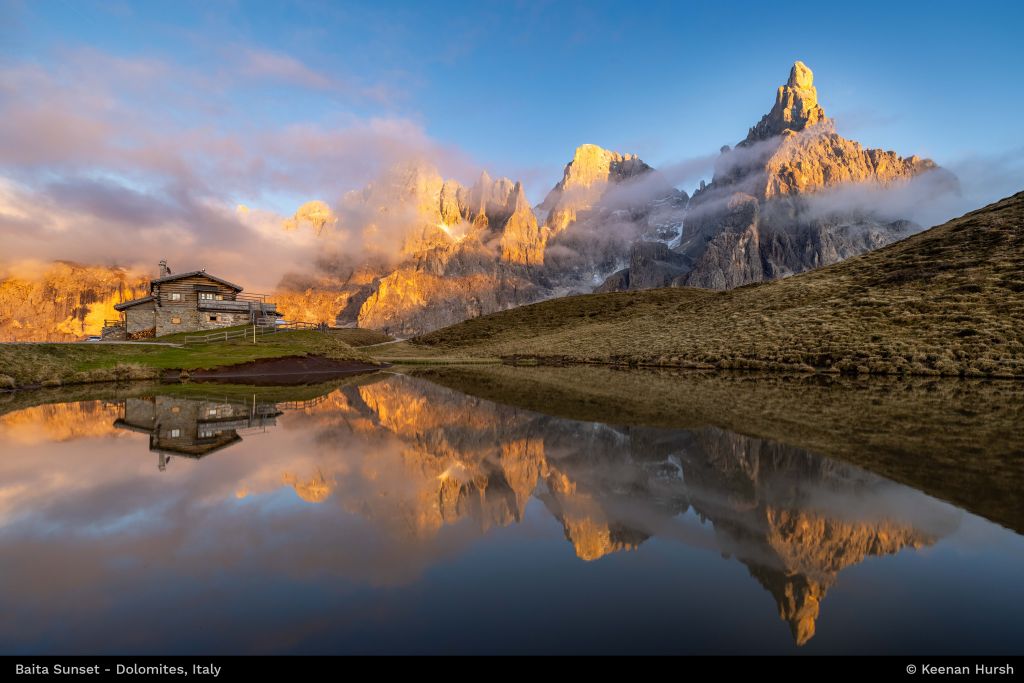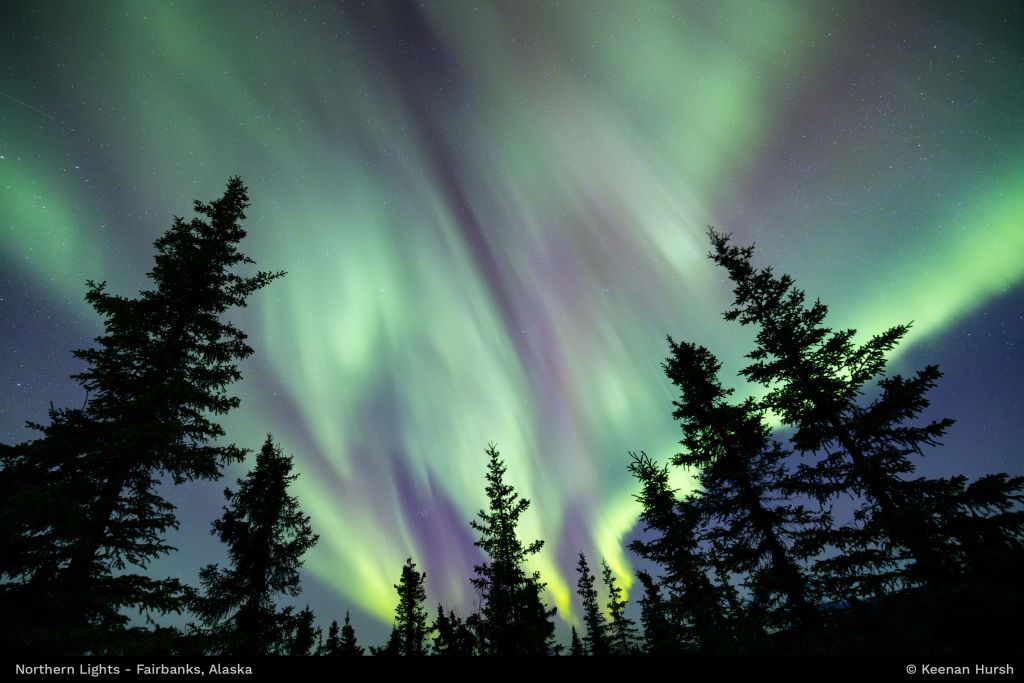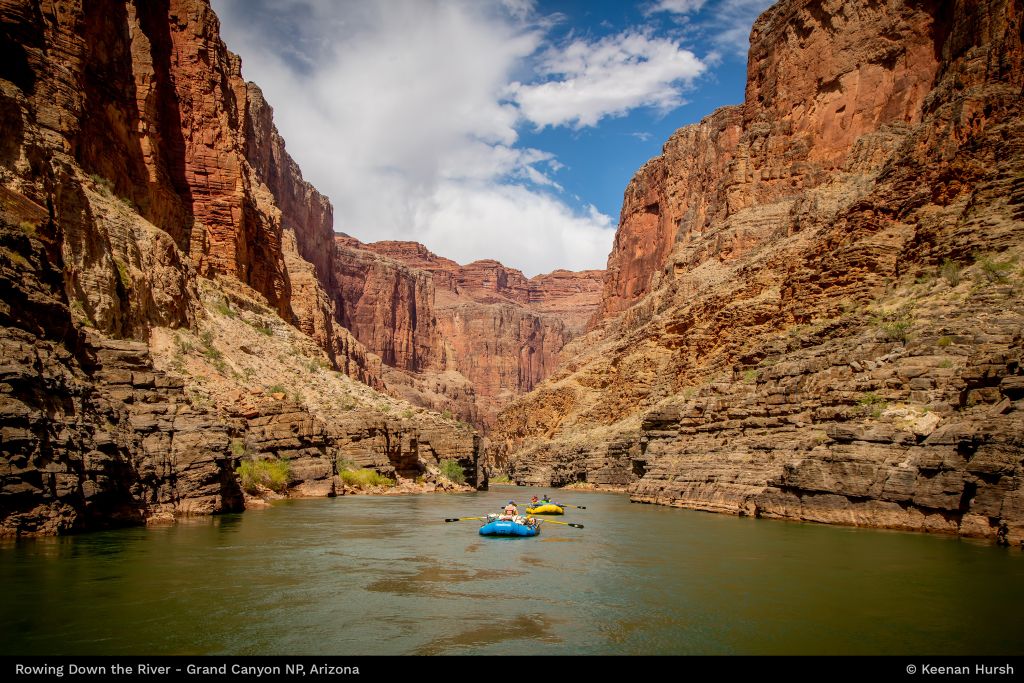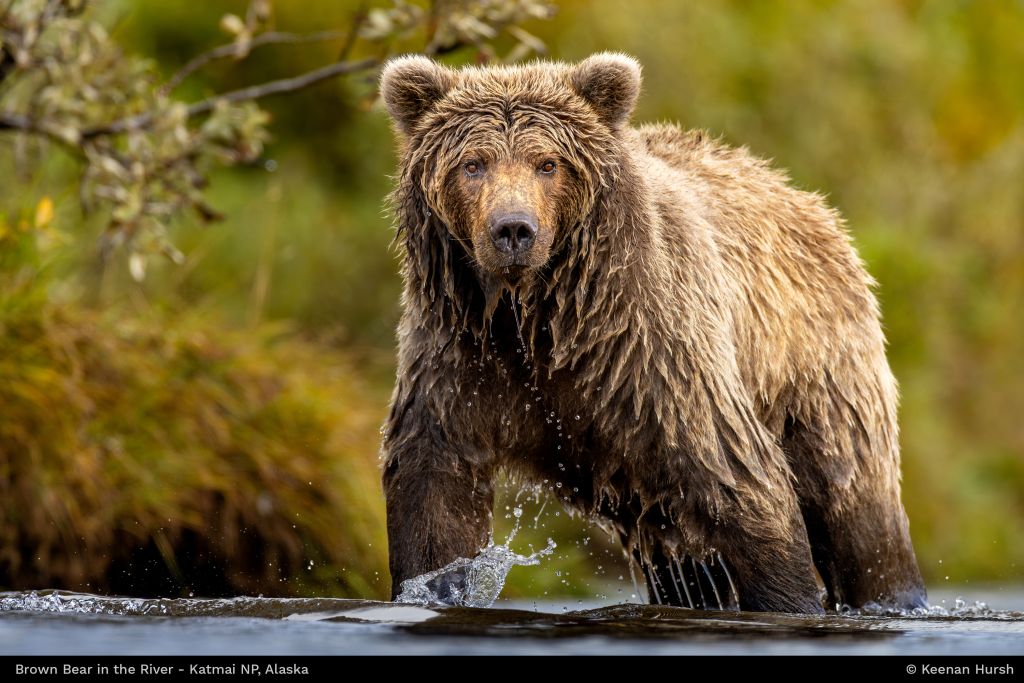Contributor: Keenan Hursh | Backcountry Journeys

On the surface and from a purely technical perspective photography is simply the process of capturing light with an optical device and converting that light into an image that can be viewed. When you look at it this way, it doesn’t sound all that interesting, impressive, or transformational. Of course, the technical and scientific aspects of photography are quite important and as photographers it’s absolutely crucial that we understand how this all works.
That being said, there is an entire other side to this whole thing that can’t necessarily be explained with mere numbers, charts, facts, and figures. There is an emotional and experiential side to photography that is just as important. At the end of the day, photography is not only a science but an art form. It is a medium in which we can tell stories, evoke strong reactions, and share our perspective of the world as unique individuals. One of the most beautiful aspects of photography, at least in my opinion, is that it gives us a chance to experience the world through someone else’s eyes. Just like a good book, a good photograph can transport us into the lives of others.
In today’s article we’re going to closely examine photography as an effective form of storytelling. If you want to create truly compelling images you not only need them to be technically proficient, but they must ultimately tell a story and not just catch but hold the viewers’ attention. Let’s get right into it and dive into several ways in which you can improve your images with effective storytelling.
Before you hit the road or pick up your camera, it’s absolutely essential to start with a strong concept. You need to decide on and understand the story you want to tell. If you just head out into the field without any direction you might get lucky and capture a few decent images, but if you have a strong idea of what you want to capture and the story you want to communicate, you’ll set yourself up for success. Of course, you want to be adaptable and flexible when you make it to your destination but starting with a strong idea or concept will go a long way. Quite Simply, defining your story ahead of time will allow you to make conscious and purposeful decisions down the road when you’re in the field.
If you’re not entirely sure about the story you aim to tell, a good way to go about this is to ask yourself some guiding questions. Why do you care about this idea or concept? Why do you want to visit a certain location or photograph a specific subject? What about this has inspired you to put in all this work? What exactly are you trying to portray/convey about your subject? These questions can be a great starting point and can steer you in the right direction when deciding on an idea.
The concept is by far the most important piece of this whole process. Even if you follow the rest of the steps to a T, your odds of producing an exceptional image will drop significantly without a strong concept or idea. Take plenty of time to figure out the story you want to tell.
The concept is by far the most important piece of this whole process. Even if you follow the rest of the steps to a T, your odds of producing an exceptional image will drop significantly without a strong concept or idea. Take plenty of time to figure out the story you want to tell.
Once you’ve decided on a strong concept or story that you’re passionate about, it’s time to figure out exactly how you want to tell that story. A lot of the following tips throughout this guide will largely fall into this topic, so I’ll keep things relatively high-level off the bat. The key here is to start to think about the specific ways in which you want to communicate your concept or message.
Again, a good way to find some direction is to ask yourself some guiding questions that will start to paint a clear path forward. For instance: What are some specific things you can focus on to communicate your story in a clear and effective manner? What are some things you should avoid that will detract from the effectiveness and impact of your story? Do you want to capture an iconic shot that many have captured before, or do you want to shine a unique light and perspective on the subject you’re shooting?
Another way you can greatly increase the impact of your story/concept is to develop a strong understanding of the subject you’re going to photograph. If this is a place, spend a lot of time learning the ins and outs of the region and its landscapes. Understand the seasons, weather, and geography. Figure out where the sun will be during specific times of day. Understand how to navigate the landscape by studying maps. If your subject is a wild animal, spend quite a bit of time researching its behavior. Understand the times of day it’s the most active, know what habitats and environments it prefers, figure out what it eats, and when its mating season is. By thoroughly understanding your subject you can more easily identify effective ways to communicate your message.
Another great way to figure out how to effectively tell your story is to study the work of others. You should look at a wide range of images portraying the subject you want to capture and figure out what exactly works and doesn’t work. Identify the images that really stand out and grab your attention and try to identify elements and creative decisions that evoke this reaction.
Starting out with a strong idea or concept is absolutely essential but you also need to figure out the best way to communicate it. Spend some time on these first two steps and the following tips and tricks and the rest of the process will flow more naturally.
One of the most crucial aspects of any photograph, or any visual form of art, is composition. Not only is composition the general layout or distribution of things in a photograph, but it’s also a guideline that directs a viewer’s attention and controls how they view an image over time. A strong composition will lead someone through an image along a storyline and will hold their attention, while a weak composition will have the opposite effect.
Of course, there are basic “rules” or guidelines that we’re likely all familiar with such as the infamous rule of thirds, but I strongly encourage photographers to go beyond these generic ideas and think about composition on higher levels. Yes, there is science to support the rule of thirds, but just like all rules, this one can and should be broken. You don’t want to get caught up on strict guidelines that could potentially have negative impacts on your images.
Instead, I would recommend that you think about composition as a roadmap instructing viewers on how to experience an image. You can of course use leading lines to direct attention towards a primary subject such as a winding river pointing to a prominent mountain in the background, or perhaps two mountain ridges that converge on and point towards a wildlife subject. Another great way to draw attention to or highlight a subject is with the use of framing. If you frame a sharp wildlife subject with blurred and out-of-focus foreground elements the subject will pop much more and stand out from its environment. Leading lines and framing, whether obvious or subtle, can dramatically alter the way an image is interpreted and therefore the story you’re trying to tell.
If the elements of your image are words or vocabulary, then think of the composition as grammar. It’s what controls how all these elements affect one another and how they can all come together to create a message or story with a greater meaning than the individual elements themselves.

As humans, emotion is an essential part of our existence. Emotions control so many aspects of our lives and often times the most effective stories are the ones that evoke strong emotional reactions. When we’re telling stories through our images it can be very effective to communicate or incorporate a sense of emotion or drama. We can look for and seek out moments and situations that express feeling.
If you compare the same landscape in different circumstances, you can clearly see what I’m talking about. Let’s say you’re photographing a desert landscape. One image is captured mid-day with a bright blue sky and harsh light that eliminates many colors and details. The other image is captured during monsoon season just before sunset with dark storm clouds in the sky, a lightning strike hitting the ground, and golden light bathing the landscape. The subject or landscape is the same, but the conditions tell a completely different story. The latter image is much more likely to create a sense of tension and drama, draw the viewer in, and evoke a strong emotional reaction.
The same is true for wildlife photography. Photographing a wild animal bedded down and inactive during the middle of the day tells a completely different story than later in the evening when that same animal is active and perhaps searching for a next meal or a potential mate. If you’re lucky you may even be able to photograph the animal interacting with its environment or other animals as well. Again, the latter will likely lead to a much more compelling image by telling a story and creating an emotional response.
Along the same lines as the previous topic, the environmental light and colors that are present in your image can completely alter how it is viewed and interpreted. Although it may be more discussed in the art forms of painting and illustration, as photographers we can and should take a look at color theory to understand how we interpret certain colors and color combinations. On subconscious and even biological levels, colors have come to hold certain meanings and significance in our lives, and this all comes into play when creating photographs.
For instance, warm tones and hues like the ones found during the golden hour can evoke a sense of comfort and make an environment seem welcoming and hospitable whereas cool tones and hues that are common in winter or on cloudy days can create a sense of unease and discomfort. We are also naturally drawn to brighter and warmer light meaning these parts of an image will capture our attention first. So, by capturing a bright and warm wildlife subject in a dark and cool environment the subject will naturally stand out and grab our attention. Think about an elk catching some warm sunlight with a dark shaded forest in the background.
Of course, we’re just scratching the surface here, but light and color play an absolutely crucial role in the way our images are viewed and therefore how our stories are interpreted.

For instance, if we’re capturing a mountainous landscape, we can tell completely different stories simply by changing lenses. A wide angle shot at 15mm with some vibrant wildflowers large in the foreground and the entire mountain range small in the background paints a completely different image and story than a tight and zoomed-in shot captured at 200mm isolating and magnifying an individual peak in the distance. Both of these techniques can work well depending on the story you’re trying to tell. The wide-angle shot is all-encompassing and gives us a sense of the overall environment around us. In this instance the wildflowers up-close in the foreground are the primary subject. Whereas the tight shot is much simpler and isolates a very specific and perhaps prominent subject that is far away. A shot like this is much simpler and in this case, the peak itself is clearly the subject.
When it comes to wildlife photography, perspective is also very important. Not only can it lead to more aesthetically pleasing images, but it can greatly enhance the stories we’re trying to tell as photographers. Just like with all styles of photography focal length and depth of field come into play when capturing wildlife images. Do you want to capture an up-close portrait shot with a creamy and blurred background behind your subject or would you rather show an animal in its habitat with a zoomed-out environmental shot? Another great tip for wildlife photography is to get down low. Not only can this help to separate your subject from the background and foreground but by being at or below your subject’s eye level you can create a much more intimate and immersive image that puts the viewer on the same plane as the animal in a sense letting us see the world through their eyes.
There are many ways to improve your images with effective storytelling and perspective is one of the most influential. Next time you head out into the field, be sure to think a lot about the perspectives you’re choosing and whether or not they are helping or hurting the story you’re trying to tell.
Another critical element of any photograph is the perspective that we choose. Perspective comes down to a few main decisions that include the lens you’re using as well as your position relative to the elements of a scene. Different focal lengths can lead to drastically different portrayals of a scene and where you chose to position yourself can transform the story you’re trying to tell.
Throughout this article, we’ve really been focusing entirely on single images. Of course, there’s nothing wrong with telling a story using a single exposure but sometimes it can be beneficial to use a series of images. This can help to portray the passing of time, or a series of events and can be an effective way to communicate change or motion.
Whether you’re combining multiple images together in one shot or displaying multiple images next to one another this can be a great way to tell your story. Some common examples of this could include a composite of multiple images capturing a solar eclipse (like the one above) or perhaps a series of images capturing a red fox in winter as it leaps into the air and then dives into the snow in search of prey. Or maybe you’re blending many exposures together into one final image such as a star trail. Perhaps you’re capturing the exact same perspective of a landscape throughout the year portraying it in four different seasons.
Whatever approach you choose to take, it may well be worth communicating your story with a series of images as opposed to just one. Of course, this is all very situational and it ultimately depends on the story you want to tell.
When we think about telling a story through one of our images it’s quite common to primarily focus on and get caught up with the big things. This is natural, and often times the dominant subjects or elements of an image are essential when communicating our concept.
That being said, I strongly encourage all photographers to really seek out and pay attention to the small details. These can also have a large impact on the story we’re communicating and can help to hold a viewer’s attention for longer periods of time. Of course, when viewing an image, we’ll likely focus on the primary elements at first but if small details catch our attention we will be pulled in even further and start to think more about the story that’s being told.
For instance, if you’re photographing a wildlife subject look for small details that help to tell the story of this animal’s past. Perhaps it has scars on its body (like the brown bear, Chunk, in the image above). These small details portray that this animal has seen its fair share of conflict and communicate that it is rugged, and hardy having survived up to this point despite some injuries. These scars can also communicate a story about the world and environment that the animal lives within.
When capturing your images and composing a specific story, remember to keep an eye out for small details that may seem insignificant at first. These can drastically help to improve your images and the stories you’re trying to tell.

Alright, this topic might be a bit controversial, but nonetheless I think it’s worth discussing in this article. Of course, photography is a subjective form of art. There are many different styles and as artists we make individual decisions on how we create our images. Some photographers are comfortable taking large creative liberties while others are not, and both are completely ok.
For me, as a nature photographer and an individual artist, I try not to alter or change my images too much. My personal philosophy is that I largely try to portray either the way I felt about something or the way I interpreted it through my own eyes. When people view my images, I want them to think about the scene they are viewing and not how it was edited or manipulated. I strongly believe that we don’t want to trick or lie to those who view our images. For the sake of today’s article, I’m going to approach this topic from my own viewpoint.
When capturing images of nature whether that’s landscapes or wildlife, I think it’s important to capture authenticity in the stories we’re communicating. We’ll talk a bit more about photo editing in the next section, but this also applies to what you do when capturing images. For instance, some photographers will bait wild animals, stage situations, or significantly manipulate their surroundings to create an image. Of course, these are all grey areas, but I think it’s important that we communicate our stories with authenticity. If our goal is to portray a wild animal in its wild habitat we don’t want to alter that animal’s behavior. Instead, we want to simply observe the animal allowing it to behave as it naturally would. Not only is this authentic but it will lead to better images at the end of the day.
Again, this is all very subjective, but in my opinion it’s important to capture authentic images and communicate authentic stories. As nature photographers we should aim to share stories from the natural world and not mislead those viewing our images.
And last but certainly not least, we’ve arrived at our final tip. One of the most important aspects of photography in the modern age is post-processing or photo editing. This is a way that we can really enhance our images, especially if you shoot in RAW, and ultimately bring our stories to life.
Of course, it’s easy to simply hit the “Auto” button in Lightroom or apply some basic edits, but I encourage all photographers to really edit with a purpose. You should go beyond what simply looks “good” or appealing and consciously think about why you’re making the adjustments you’re making. Of course, these basic sliders are a great starting place but it’s never a bad idea to go beyond them or even dial some of them back depending on the story you’re trying to tell.
When you’re adjusting the basics like contrast, color temperature, saturation, vibrance, and others think about the story you’re trying to tell. If you want a scene to feel warm and inviting perhaps adjust the color temperature slider accordingly. If you want to pull out fine details in the fur or feathers of an animal perhaps increase your texture and contrast. These are just some simple examples, but the key here is to think about the message you’re trying to communicate throughout your editing process.
Once you’ve adjusted the basics it’s time to take your edits to the next level. Of course, it’s often good to have a soft touch, but masking and localized editing can be powerful tools when it comes to communicating your story. This can be a really effective way of guiding the viewer’s gaze and drawing them to specific elements of your image. Masking is incredibly powerful and when done correctly, can completely transform an image and increase its impact.
I always try to get things as close to perfect as I can in-camera, but I also spend a lot of time editing my images. If you want to enhance your stories and create more compelling and intriguing images you need to edit with a purpose.
In many ways, Storytelling is the soul of photography and really any form of art or expression. It’s a unique gift that we have as humans and it’s something I think we all could appreciate a bit more. By approaching your photography with intention and a clear narrative and idea, you can create images that do more than just showcase a scene—they will resonate with viewers, grab their attention, evoke strong emotional reactions, and create a lasting impact.
Next time you head into the field or pull up an image for editing, think beyond the purely technical aspects and focus on the story you want to tell. The result will be more meaningful, engaging, and will elevate your photography to new heights. Remember, a great photograph is not just seen—it is felt, experienced, interpreted, and remembered.
I sincerely hope this article has been helpful and informative and that it’s given you some food for thought the next time you head out with your camera. Thanks for reading and happy shooting!

Keenan Hursh is a Photographer, writer, and creative storyteller based out of Bozeman, Montana. He draws inspiration from his frequent excursions into the natural world and always brings his camera along to capture whatever adventures he finds himself in. He is passionate about documenting and sharing fleeting moments from the natural world and focuses primarily on wildlife, landscape, and adventure photography. Keenan is both a Photography Trip Leader and the Website, Copy, and Content Specialist for Backcountry Journeys, the #1 trusted leader in small-group photography workshops, trips, and safaris with well over 100 trips across the globe. You can view Keenan’s portfolio on his website at keenanhurshphoto.com.
Discount Applied Successfully!
Your savings have been added to the cart.